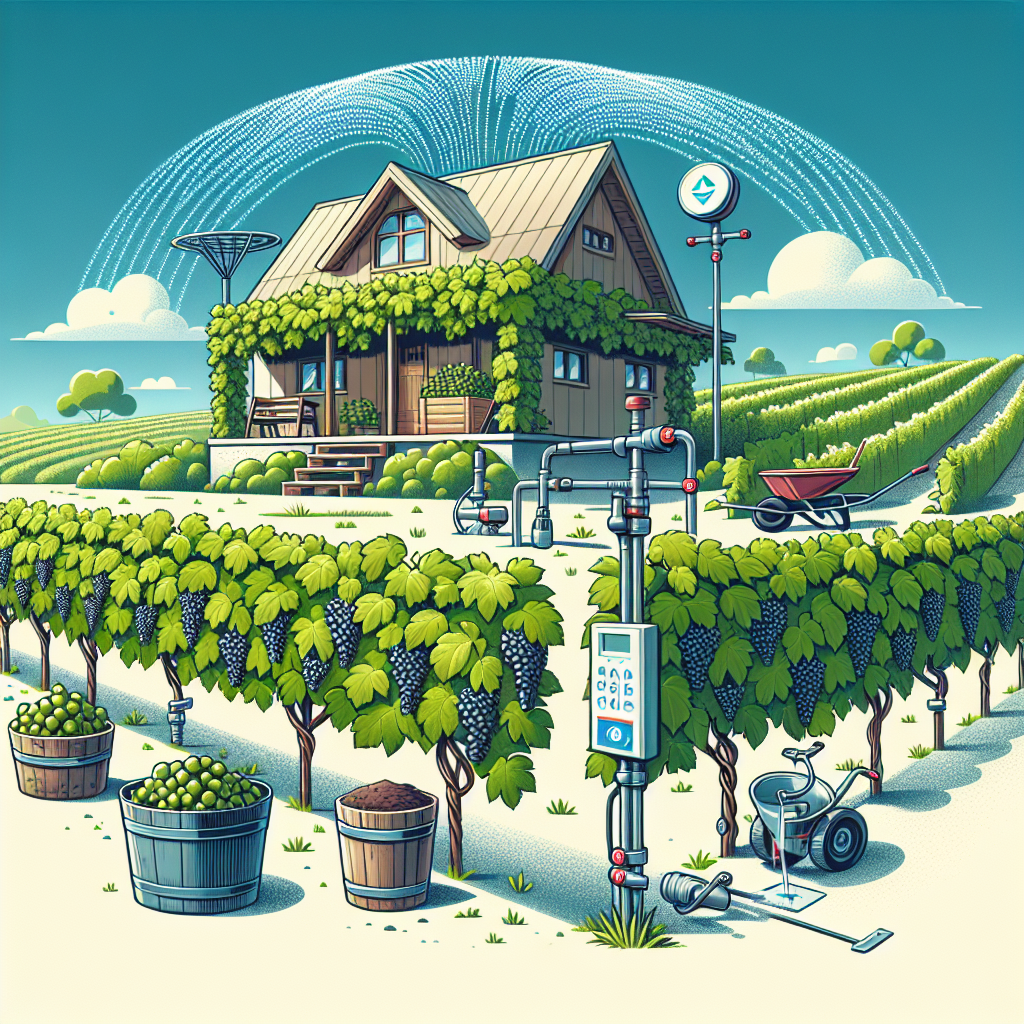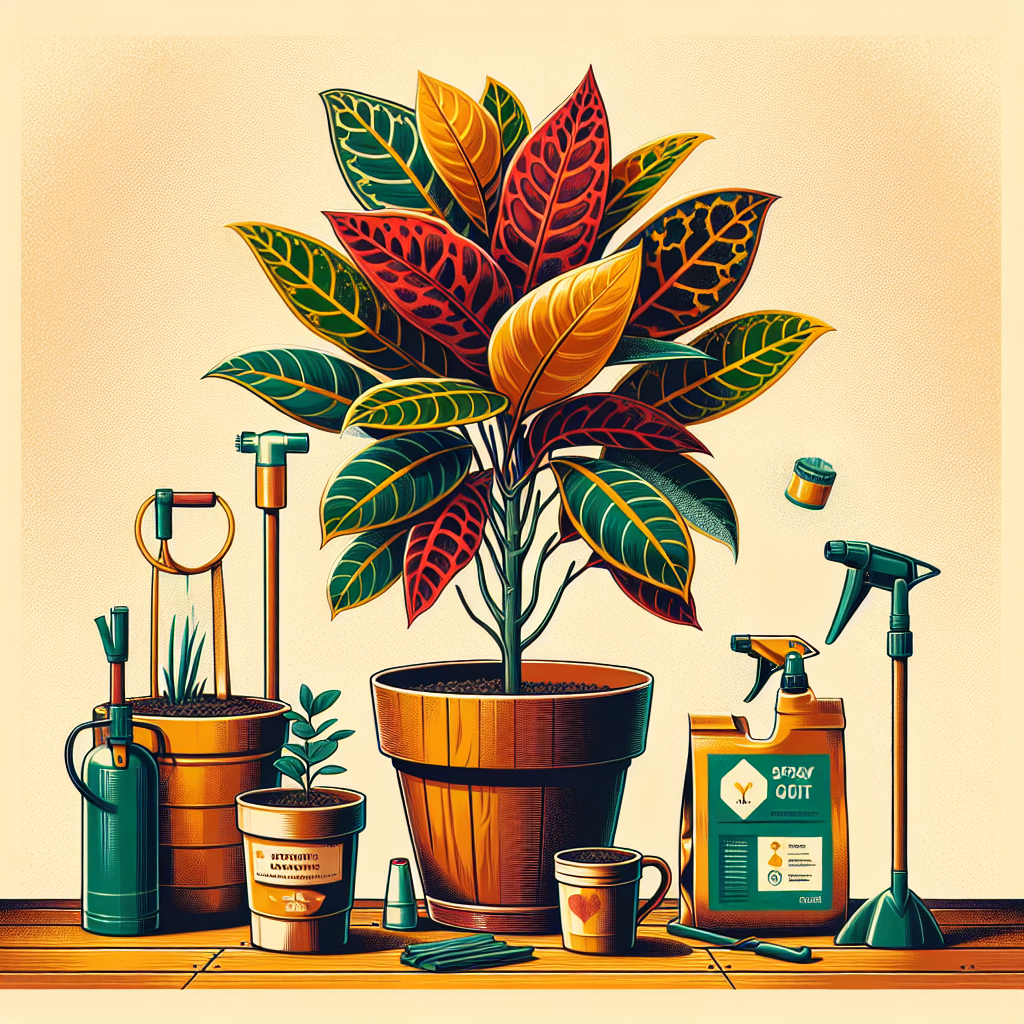Boosting Production in Your Home Vineyard
Updated May 21, 2024 at 2:57 am

Starting Your Home Vineyard Journey
Pet Friendly: When boosting production in your home vineyard, its important to consider that many vineyard treatments can be harmful to pets. Always look for pet-friendly options.
Light Requirements: Grapevines require full sun to produce the best fruit, so planting in a location that receives at least 6-8 hours of direct sunlight is optimal.
Watering: Regular watering, especially during the growing season, is key. However, overwatering can lead to root rot and fungus, so finding a balance is critical.
Humidity: Grapevines can tolerate a range of humidity levels, but they prefer dry conditions that reduce disease risk.
Temperature: Vines thrive in temperate climates with well-defined seasons. Winter chill is necessary for dormancy, and warmth is needed for growth and fruit ripening.
Difficulty: Growing grapes can be moderately difficult due to their need for specific pruning, disease management, and harvesting techniques.
Selecting the Right Grape Varieties
Choosing grape varieties suited to your climate, soil, and personal taste is a crucial first step toward a bountiful vineyard. Research shows that regional varieties often perform best.
An excellent example is the Cabernet Sauvignon, which has a strong track record in warmer regions. Its durable nature and resistance to several common vine diseases make it a favorite among home vintners.
Soil Optimization for Grapevines
Getting the soil right is a foundation for grapevine health and productivity. Aim for well-drained, fertile soil with a slightly acidic to neutral pH level.
Products like the Espoma Organic Bio-tone Starter Plus have been highly rated for establishing healthy roots. According to reviews, its mycorrhizae content dramatically improves root mass, leading to better nutrient uptake.
Pros of Espoma Organic Bio-tone Starter Plus:
- Enhances root growth
- Contains beneficial soil microbes and mycorrhizae
- Organic and safe for pets
Cons of Espoma Organic Bio-tone Starter Plus:
- May be pricier compared to synthetic fertilizers
- Has a distinct odor that might be unpleasant to some
Find This and More on Amazon
Elevating Vineyard Practices: Pruning and Training
Pruning and training your vines are crucial for maximizing fruit production. The goal is to optimize sun exposure and air circulation, which are essential for quality grapes.
Invest in a reliable pair of pruning shears like the Felco F2 Classic Manual Hand Pruner, beloved for its precision and durability. Many users rave about the clean cuts and ergonomic design, which can make long pruning sessions less strenuous.
Pros of Felco F2 Classic Manual Hand Pruner:
- Swiss made with high-quality material
- Ergonomic design reduces hand fatigue
- Replaceable cutting blade ensures long-term utility
Cons of Felco F2 Classic Manual Hand Pruner:
- Higher cost compared to other brands
- May require periodic maintenance to keep in best condition
Water Management for Healthy Vines
Irrigation is not just about quantity; its about timing and efficiency. Drip irrigation systems are perfect for delivering water directly to the root zone without wasting it on non-target areas.
Products like the Raindrip Automatic Watering Kit have gathered positive reviews for their ease of installation and effectiveness in ensuring vines receive consistent moisture.
Pros of the Raindrip Automatic Watering Kit:
- Saves water by targeting specific areas
- Customizable for your vineyards layout
- Automates watering, saving time and effort
Cons of the Raindrip Automatic Watering Kit:
- Initial setup may be complicated for some users
- May require additional parts for expansion
Pest and Disease Control Strategies
To boost production, you must protect your vines from pests and diseases. Regular monitoring and preventive measures can save you a lot of trouble down the line.
Consider organic options like neem oil, which is celebrated for its effectiveness against a wide array of vineyard pests. Bonide Neem Oil is a product that has received strong endorsements for its ability to act as an all-purpose fungicide, miticide, and insecticide while being safe for beneficial insects.
Pros of Bonide Neem Oil:
- Organic and non-toxic
- Acts as a 3-in-1 solution for various issues
- Favored for its effectiveness on a broad range of pests
Cons of Bonide Neem Oil:
- Some users dislike the strong smell
- Needs to be applied regularly for best results
Harvesting and Yield Maximization
Harvesting grapes at the right time is critical for flavor and yield. Invest in a refractometer, such as the Ade Advanced Optics Refractometer, to measure sugar content and determine the perfect harvest time based on reviews, the precision, and ease of use of this tool elevate grape picking to a science.
Pros of Ade Advanced Optics Refractometer:
- Provides accurate readings for optimal harvest time
- Easy to use, even for those new to winemaking
- Durable design with a protective case
Cons of Ade Advanced Optics Refractometer:
- Might be an unnecessary expense for hobbyists not focused on precise sugar levels
- Requires calibration for accurate readings
Making the Most of Your Harvest
After harvesting, it’s crucial to have a plan for your grapes. If making wine, temperature-controlled fermentation is key. For fresh consumption or sales, proper storage to maintain freshness is vital.
Home winemakers praise the Inkbird ITC-308 Digital Temperature Controller for keeping fermentation temperatures in check. Its dual relay output allows users to connect both heating and cooling devices, providing outstanding control over the winemaking process.
Pros of Inkbird ITC-308 Digital Temperature Controller:
- Dual relay for both heating and cooling control
- Highly accurate sensors
- User-friendly interface
Cons of Inkbird ITC-308 Digital Temperature Controller:
- Some find the instruction manual confusing
- May require additional equipment for complete setup
Community Involvement and Continuous Learning
Joining local winemaking clubs or online forums can provide valuable insights and support. Stay updated on the latest viticulture practices to continually improve production.
Remember, the journey of cultivating a home vineyard is as rewarding as the harvest itself.
Understanding Vineyard Microclimates
Every vineyard is unique and understanding your microclimate is crucial for boosting production. Microclimates are small areas within your vineyard where the climate differs from the surrounding area.
Identifying colder spots, areas prone to frost, or places that receive intense heat helps in making informed decisions about planting and care. Data loggers, like the Elitech GSP-6 Temperature and Humidity Data Logger, are instrumental in gauging these environmental conditions precisely.
Advancements in Vineyard Technology
Incorporating technology can lead to significant improvements in vineyard productivity. Precision agriculture tools allow for monitoring vine growth, soil conditions, and even predicting disease outbreaks.
Using a smartly designed app like VitiCanopy, which analyzes vine canopy size and density, growers can attain insights that inform pruning and harvesting decisions, contributing to an enhanced yield.
Maximizing Space with Innovative Trellising
Effective use of space through trellising can dramatically increase the number of vines you can grow. Trellising systems like the Geneva Double Curtain are praised for allowing better light penetration and air movement, which benefit grape quality and volume.
Spatial planning tools or software, commonly used by professionals, might be an investment worth considering to visualize and optimize vineyard design.
Organic and Biodynamic Vineyard Practices
Many home vineyard owners are turning to organic and biodynamic practices to improve soil health and grape quality. Composting, green manuring, and introducing beneficial insects contribute to a thriving ecosystem.
Products such as Dr. Earth Home Grown Tomato, Vegetable & Herb Fertilizer support this approach, offering an organic solution to nourish plants without the use of synthetic chemicals.
- Sustainably produced and organic-certified
- Contains no GMOs, chicken manure, or sewage sludge
- Promotes soil health and plant vitality
- Not specifically formulated for grapes; users may need to supplement with grape-specific nutrients
- Organic fertilizers may be slower to act compared to synthetic ones
Financial Planning for Home Vineyard Expenses
Effective financial planning ensures you can afford necessary investments for boosting vineyard production. Budget for equipment, vines, soil amendments, and labour.
Consider the long-term ROI of items like the Sansone Stainless Steel Water Dispenser; it’s a robust option for storing and dispensing water or liquid fertilizers, cutting down waste and improving efficiency.
Marketing Your Home Vineyard Produce
If your aim is to sell your grapes or homemade wine, understanding marketing strategies is vital. Create a compelling story around your vineyard and build a brand presence both locally and online.
Platforms like Etsy or local farmers’ markets can be excellent outlets for small-scale operations. A simple yet sophisticated label printer, such as the Phomemo Label Maker, can help personalize your product and make it stand out.
Summary of Boosting Home Vineyard Production
Boosting production in your home vineyard involves understanding the microclimatic peculiarities of your land, investing in the right resources and technology, implementing progressive trellising techniques, and embracing organic practices that enrich the soil and control pests. Planning your expenses and marketing your produce thoughtfully are also key aspects of maximizing the fruits of your labor. It is important to balance tradition with innovation, as continued education and community involvement are the cornerstones of any successful vineyard.
Enhancing Biodiversity in Your Vineyard
Introducing biodiversity in your vineyard can boost its health and resilience against pests and diseases. By diversifying the ecosystem, natural predators thrive and help maintain the balance of your home vineyard.
Planting cover crops between rows, like clover or mustard, can enrich the soil and attract beneficial insects. Moreover, they prevent erosion and improve the structure of the soil, which, in turn, helps your grapevines flourish.
Effective Use of Natural Predators
Emphasizing natural pest management means less reliance on chemicals. Introducing natural predators such as ladybirds, lacewings, and predatory mites curbs the presence of harmful pests.
Nests and shelters can encourage these helpful creatures to make your vineyard their home. Doing so works in harmony with nature to sustain a healthier vineyard ecosystem.
Year-Round Vineyard Care Considerations
Your vineyard requires attention throughout the year to maintain productive grapevines. Winter is a key time for planning and pruning, spring for bud breaking and frost protection, summer for managing growth and pests, and fall for harvest and preparation for dormancy.
Understanding and responding to the needs of your grapevines during each season ensures you take proactive steps to optimize their health and productivity.
Utilizing Local Resources and Expertise
Connecting with local agricultural extension offices or viticulture experts can provide valuable resources specific to your area’s climate and soil conditions. They can offer personalized advice, workshops, and even soil testing services to improve your home vineyard success.
Attending seminars and vineyard tours can also be a way to learn new techniques, discover new tools, and network with fellow grape growers in your community.
Record Keeping for Vineyard Improvement
Good record keeping is vital for tracking the progress and health of your vineyard. By documenting practices, weather conditions, and grape production results, you can analyze what works and what needs adjustment.
Simple software options like Excel or specialized vineyard management apps can make this task easier and more efficient, contributing to a data-driven approach to vineyard care.
Adapting to Climate Change
Climate change poses new challenges for grape growing. Adapting practices like adjusting planting times, selecting heat-resistant grape varieties, and water conservation techniques are becoming increasingly important.
Staying informed and flexible in your vineyard practices can mitigate the potential negative effects of climate shifts and ensure sustained production.
Conclusion
Cultivating a productive home vineyard is a rewarding endeavor that blends tradition with innovative approaches to agriculture. By considering pet-friendly practices, optimizing light, water, and soil conditions, and selecting the right grape varieties, you lay the groundwork for success. Tools like high-quality pruners, mycorrhizae-rich fertilizers, and precise monitoring equipment contribute to vine health and fruitful harvests. Embracing organic practices, biodiversity, and community resources not only benefits your vines but the environment as well. With dedication, learning, and a heart geared toward sustainability, your home vineyard will not only boost in production but also become a lasting source of joy and pride.
Shop more on Amazon

